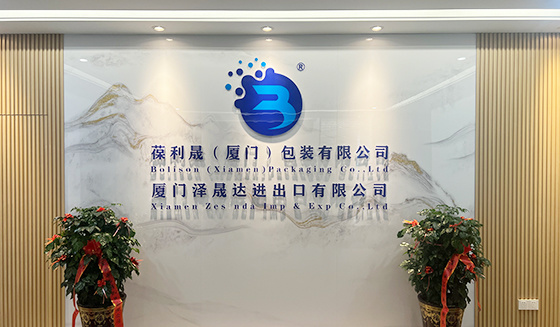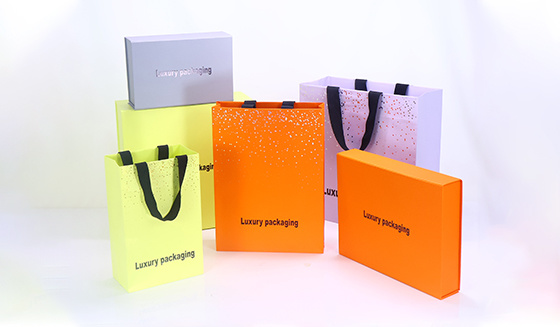21
2025
-
11
Foldable Cardboard Boxes: The Key to Efficient Warehouse Management
Foldable Cardboard Boxes: The Key to Efficient Warehouse Management In today's fast-paced logistics environment, efficient warehouse management is essential for businesses looking to streamline operations and reduce costs. One of the most effective solutions that have emerged in recent years is the use of foldable cardboard boxes. These versatile storage and shipping solutions not only enhance org
Foldable Cardboard Boxes: The Key to Efficient Warehouse Management
In today's fast-paced logistics environment, efficient warehouse management is essential for businesses looking to streamline operations and reduce costs. One of the most effective solutions that have emerged in recent years is the use of foldable cardboard boxes. These versatile storage and shipping solutions not only enhance organization and space efficiency but also contribute to sustainable practices. In this comprehensive guide, we will explore the various aspects of foldable cardboard boxes and how they play a crucial role in optimizing warehouse operations.
Understanding Foldable Cardboard Boxes
Foldable cardboard boxes are specially designed containers that can be easily collapsed and stored when not in use. They come in various sizes and designs, allowing businesses to choose the right box that fits their specific needs. The materials used in these boxes provide durability and protection for goods during storage and transport.
The Different Types of Foldable Cardboard Boxes
Understanding the different types of foldable cardboard boxes available is vital for making an informed choice. Below are some popular types:
1. Regular Slotted Containers (RSC)
RSCs are the most common type of foldable cardboard box. They feature flaps that fold down to create a secure base, making them both easy to assemble and collapse.
2. Half Slotted Containers (HSC)
HSCs are similar to RSCs but lack a base. They are often used as inner packaging or display boxes, providing easy access to the products inside.
3. Die-Cut Boxes
These boxes are custom-made to fit specific products, ensuring maximum protection during transit. Their unique shapes allow for creative branding opportunities.
4. Multi-Depth Boxes
Multi-depth boxes allow for flexibility in sizing, as they can be cut down to different heights. This adaptability makes them ideal for varying product sizes.
The Advantages of Using Foldable Cardboard Boxes in Warehousing
Implementing foldable cardboard boxes in your warehouse management system offers numerous benefits that can lead to increased efficiency and cost savings.
1. Space Optimization
One of the standout features of foldable cardboard boxes is their ability to collapse when empty, freeing up valuable warehouse space. This allows for more efficient use of storage areas, reducing the need for larger facilities.
2. Cost-Effectiveness
Foldable cardboard boxes are often less expensive than traditional rigid boxes. Their lightweight design also reduces shipping costs, making them a financially savvy option for businesses of all sizes.
3. Sustainability
With an increasing focus on sustainability, foldable cardboard boxes present an eco-friendly alternative. Made from recyclable materials, they contribute to reducing waste and promoting environmentally conscious practices.
4. Enhanced Inventory Management
These boxes can be easily labeled and stacked, which simplifies inventory tracking and organization. This leads to quicker retrieval times and reduces the chances of errors during picking.
Best Practices for Implementing Foldable Cardboard Boxes
To maximize the benefits of foldable cardboard boxes, businesses should follow these best practices:
1. Assess Your Needs
Identify the types of products you handle and choose the appropriate box design and size to ensure proper fit and protection.
2. Standardize Box Sizes
By standardizing box sizes, you can streamline the packing process and simplify inventory management. This uniformity reduces confusion and training time for staff.
3. Utilize Technology for Tracking
Implement barcode or RFID systems to track foldable boxes in your inventory. This technology enhances visibility and control over your warehouse operations.
4. Train Employees
Provide training for employees on the best practices for handling and assembling foldable cardboard boxes. This ensures that they adhere to safety protocols and operational efficiency.
Common Misconceptions About Foldable Cardboard Boxes
Despite their growing popularity, there are several misconceptions surrounding foldable cardboard boxes that can hinder their adoption.
1. They Are Not Durable
Many assume that foldable cardboard boxes are flimsy. However, when constructed from quality materials, they can offer significant durability and protection for various products.
2. They Do Not Provide Adequate Protection
Some businesses believe that foldable boxes won't protect goods during transit. In reality, these boxes can be reinforced and designed with additional cushioning to ensure product safety.
3. They Are Difficult to Assemble
Contrary to this belief, most foldable cardboard boxes are designed for quick and easy assembly, allowing for efficient packing processes.
Case Studies: Successful Implementation of Foldable Cardboard Boxes
To illustrate the effectiveness of foldable cardboard boxes, consider the following case studies:
Case Study 1: E-Commerce Company
A leading e-commerce company integrated foldable cardboard boxes into their warehousing system, resulting in a 30% reduction in shipping costs. Their ability to collapse the boxes when empty allowed them to save on storage space and improve their overall efficiency.
Case Study 2: Food Distribution Business
A food distribution business adopted foldable cardboard boxes to improve their inventory management. By standardizing box sizes and implementing tracking technology, they reduced picking errors by 25% and enhanced product freshness during transport.
Future Trends in Packaging: The Role of Foldable Cardboard Boxes
The packaging industry is constantly evolving, and foldable cardboard boxes are set to play a significant role in the future of warehousing and logistics.
1. E-commerce Growth
As e-commerce continues to expand, the demand for efficient, sustainable packaging solutions will increase. Foldable cardboard boxes are positioned to meet this demand due to their versatility and eco-friendliness.
2. Automation and Robotics
With the rise of automation in warehouses, foldable cardboard boxes will need to be compatible with robotic systems. This compatibility will further enhance efficiency and productivity in warehouse operations.
3. Customization and Innovation
Advancements in technology will allow for greater customization of foldable cardboard boxes, enabling businesses to create specialized packaging solutions that cater to unique product requirements.
Frequently Asked Questions (FAQs)
1. What are foldable cardboard boxes made of?
Foldable cardboard boxes are typically made from recycled paperboard or corrugated cardboard, providing strength and durability.
2. How do I choose the right size of foldable cardboard box?
Evaluate the dimensions and weight of your products to determine the appropriate box size. It's important to ensure a snug fit to prevent damage during shipping.
3. Can foldable cardboard boxes be reused?
Yes, foldable cardboard boxes can be reused multiple times as long as they are in good condition. Their collapsible design makes them easy to store when not in use.
4. Are foldable cardboard boxes environmentally friendly?
Absolutely! Foldable cardboard boxes are typically made from recyclable materials, making them a sustainable packaging option.
5. How can I enhance the durability of foldable cardboard boxes?
You can enhance the durability of foldable cardboard boxes by selecting high-quality materials, reinforcing corners, and utilizing additional padding when necessary.
Conclusion
Foldable cardboard boxes are more than just a packaging solution; they are a vital tool for optimizing warehouse management. Their ability to save space, reduce costs, and promote sustainability makes them an attractive option for businesses looking to enhance efficiency. By understanding different types of foldable boxes, implementing best practices, and keeping abreast of future trends, organizations can leverage this innovative packaging solution to thrive in today’s competitive landscape. Embracing foldable cardboard boxes is not just a trend; it’s a strategic move toward operational excellence.
foldable cardboard boxes
Previous Page
Previous Page






